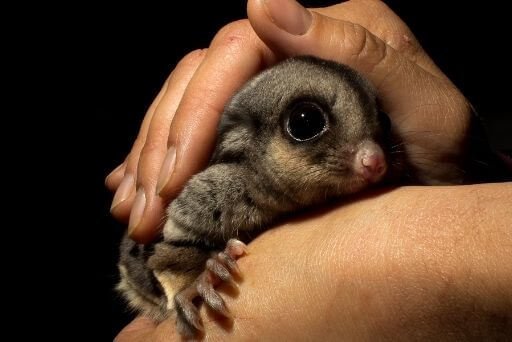How to take care of your pet sugar gliders?
If you are thinking of keeping Petaurus, you should be sure to do your research first and get all the information from several different sources on how sugar Petaurus should be cared for, preferably reputable ones. They are about the same size as a gerbil and are gaining popularity as pets, probably because they are easy to care for and are very cute and friendly. Also, if you feed them well, they are practically odorless and can live for many years making the animal ideal for many people. Let’s take a look at the best ways to care for your sugar Petaurus.

- Sugar gliders are nocturnal animals:
They are content to “cuddle” and during the day they like to be in their cage or in your hand or pocket. During the night, they become more active and will slither into your hand. If you keep it snug in your hand, they are easy to handle and will not run away, even during their active periods. Both male and female Petaurus make excellent exotic pets, with a lifespan of ten to twelve years, sometimes a little longer. In the wild, however, 4 to 6 years is the usual life expectancy.
Although reasonably easy to care for, sugar gliders require more time than most small caged mammals, and have some special needs. Before deciding to become a sugar glider owner, you should make sure you have the commitment and time your new pet needs.
- Sugar gliders are extremely social animals:
In the wild, they live in large family groups, called colonies. Because of their social nature, Petaurus should always be kept in pairs or small groups. No matter how much time you plan to spend with your pet, you cannot replace the companionship of another petaur. It is not normal for a petaur to be alone; it is unfair to force solitude on your pet.
When cooped up alone, Petaurus are likely to become depressed, withdrawn, even defensive, and may refuse to eat and eventually die of loneliness. If you are not interested in having more offspring, same-sex groups can get along well. If males are kept together, they should be littermates or bonded at an early age.
- Vaccinations in sugar Petaurus:
Gliders do not require vaccinations, but if they encounter medical problems, you will need to find a veterinarian with glider experience, which will make it easier for him to understand the problems presented by the sugar glider.

- Diet of the sugar petaur:
Most of the Petaurus’ diet consist of insects; they love to catch them. They also eat small amounts of dry cat food, sugars, cereals, some fresh fruits, proteins, vegetables (except beans, which all animals, including small children, seem to detest) and hard-boiled eggs.
- Petaurus are not low-maintenance pets:
They cannot be litter box trained, so daily cleaning is necessary. They sometimes like to play by throwing bits of food all over the place. They are bright and curious little creatures that will get into anything if given the opportunity. Plus, they have opposable toes, which means they are adept at untying knots and performing similar tasks. They should not be allowed access to anything they can hurt themselves on, and in the cage, they live in, should be completely escape proof.
- The sugar petaur’s cage:
According to ethological studies, it is considered inappropriate to keep a sugar glider in a cage smaller than 2 x 2 x 2 meters and the size of the mesh or grid should be 1 x 2.5 centimeters. This is due to the fact that being a nocturnal species, it is during the night when they become active.
In the wild, a petaur would spend the night flying and jumping between trees and branches, covering distances of more than 50 meters. We must take into account that the location of the cage in the home should not have access to potential predators, such as dogs, cats, snakes, etc.
Inside the cage, you can place a nest box that simulates the hollow of a tree, with a narrow entrance, so that only it fits. This way the animal will feel more secure. The location of the nest as well as the feeders and drinkers should be high, not close to the floor of the cage. You can also place branches vertically and horizontally.

- Social Behaviors that Sugar Gliders have:
Be careful when introducing new sugar gliders to a cage. Sugar gliders are very social creatures and love to be part of a group. They usually get along well with other sugar gliders. Two or more females or males work well, but if you put both genders in one cage, this could very easily result in offspring.
Research well before you bring home such pets. They are exotic pets and need special care, whether it is food or habitat.




